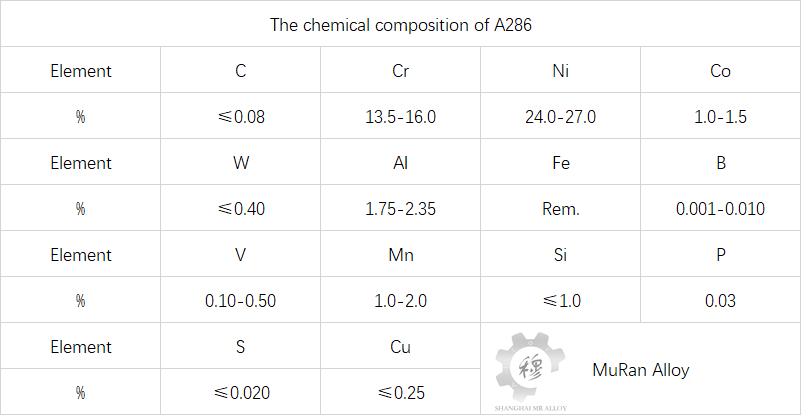Introduction of A286 Iron-based Superalloy Material
Tech Center 2025-08-08 110
Overview of GH2132
GH2132 alloy (foreign grade A286) is a stable γ -austenitic matrix, precipitation-strengthened iron-nickel-based deformable superalloy composed of 15Cr-25Ni-Fe as the base. It features high strength and excellent corrosion resistance at room temperature, as well as high yield strength and creep strength at high temperatures. Its maximum service temperature is 650 ° C. It is often used to manufacture aircraft load-bearing components that operate for a long time at temperatures below 650℃, such as turbine discs, blades and fasteners, etc. In recent years, GH2132 alloy cold-drawn bar and wire have often been used in the production of domestic fastener products with a strength grade of 1100MPa, such as hollow rivets, bolts and nuts, etc.
Up to now, the usage rate of high-temperature alloys in the field of aero engines has exceeded 50%. GH2132 alloy is a new type of iron-based superalloy developed in China. This alloy is strengthened by the precipitation of intermetallic compound γ’ phase (Ni3AlTi) through aging. After solution aging, it has a series of excellent comprehensive properties, such as high yield strength, good thermal hardness and high creep strength.
Chemical composition of A286

Organizational Analysis of A286
(1) The mixed grain strip structure of A286 alloy occurs in the core of the alloy bar. The grain size in the fine-grained zone is less than 10μm, while that in the coarse-grained zone can reach over 60μm.
(2) The cause of the formation of mixed crystal bands is the combined effect of element segregation and cold drawing deformation. The pinning effect of the second-phase particles produced by the element segregation in the banded region and the solute dragging effect will significantly inhibit the growth and migration of the austenite grains nearby, which is the main reason for the appearance of banded mixed grains in the alloy. In addition, during cold drawing deformation, due to the inconsistent orientations of each grain, the actual strain of the grains is also inconsistent when subjected to tensile force, which further aggravates the phenomenon of mixed grains.
(3) The hardness shows a gradually increasing gradient change from the coarse-grained region to the fine-grained region. The microhardness value of the fine-grained region is 30HV-40HV higher than that of the coarse-grained region. This is caused by the gradient structure of different grain boundary numbers, dislocation density changes, and twin distribution.
The above is an introduction of A286 iron-based superalloy material. (wellalloy.com) updates alloy information daily. Welcome everyone to offer suggestions and exchange ideas.
